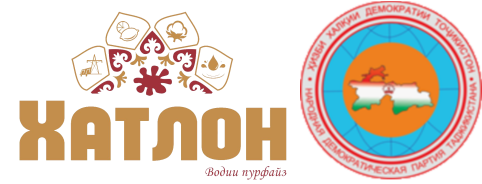
DUSTI — the sign of friendship of the various nationalities of the country
A brief historical
information.
Dusti district (former Jilikul district) was established in 1930. Its total area is 1,2, thousand km2 and more than 112 thousand people live in this area. The district climate is dry; its temperature rises to +500 degrees C (warm) in summer and -180 degrees C (cold) in winter. Dusti district borders with Jayhun, Jaloliddini Balkhi, Qubodiyon and Khuroson districts and the distance of the district to the center of Bokhtar city is 47 km far and to Dushanbe city is 146 km far. From 1940 to 1954 of the last century from Sangvor, Rasht, Tojikobod districts, Badakhshon and Kulob regions people have been migrated to this area for reviving the agricultural sector.There are 6 settlements of town and villages, 56 villages, 12 streets in the district and the major part of the population are Tajiks. By the initiative of the Founder of Peace and National Unity – the Leader of Nation, the President of the Republic of Tajikistan, Respected Emomali Rahmon, due to the district’s multinationalism and the effort of strengthening the friendship and unity of the people, on March 22, 2016 the district has been named Dusti.
Attractive travelling areas.
There seems to be many fascinating sightseeing places for travelling in Dusti district, which attract the attention of each spectator and traveler. Such as: Imam Zaynalobiddin tomb, the Tigers’ Forest and its Live Museum, the Cemetery of Qaroburyo, the newly established sanatorium “Zam-zam”, the river Vakhsh, the bridge of “Hope & Dream” and several historical and sightseeing places are there, where the people, who come to this area, by all means take memory photos and videos and it is interesting also to mention, that majority of talents make their video clips in this area.
The particularities of the district. In Dusti district, one can see more bikers, than in other districts. There are many Turkish –origin populations live here and as far as we know, the culture and traditions of the two friendly nations have been mixed together. One can feel this phenomenon in their similar clothing, customs and traditions. In connection with this, during their trip to Dusti district, the tourists and bikers can get acquainted with an unprecedented mix of civilizations.
Infrastructure service
The district has a building of culture department, where there are 2 Cultural Palaces, 4 cultural centers, 1 rural club, 4 traveler clubs, 15 libraries, 2 museums, 1 music school, 1 cultural — entertainment garden, totally 27 cultural institutions are there, where 84 employees work there. There is a printing house works in the district, which publishes a district newspaper “The Message of Dusti” (“The Friendship Message”), each week.
Public craftsmanship and skills Dusti district has been known for its skilled craftsmen from ancient time. Today in Dusti district, people are engaged with various ancient and modern folk crafts. Such as: sheroz-knitting, socks-knitting, carpet-knitting, shoes making, felt-production; needlework, embroidered needlework with golden threads, chakanduzi, cap-sewing; wooden made dishes, wooden made cradles; blacksmith’s work, sheet iron-making; traditional oven-making; cooking and so on.
Добавить комментарий Отменить ответ
Для отправки комментария вам необходимо авторизоваться.
Ҷустуҷӯ
Хабарҳои охирин
- Program of the International Tourism Forum and Exhibition «Welcome to Ancient Khatlon» 20.02.2024
- ФОРУМ ВА НАМОИШГОҲИ БАЙНАЛМИЛАЛИИ САЙЁҲИИ МАРҲАБО БА ХАТЛОНИ БОСТОН TOURISM FORUM AND EXHIBITION WELCOME TO ANCIENT KHATLON 20.02.2024
- Натиҷагирии фаъолияти Кумитаи рушди сайёҳӣ дар соли 2023 ва вазифаҳо барои соли 2024 09.01.2024
- Achievements of the tourism sector of the Khatlon region 18.12.2023
- Мақбараи Мавлоно Қутбиддини Нишопурӣ/Мавзолей Мавлоно Кутбиддина Нишопури/Mausoleum of Mavlono Qutbuddin Nishopuri 04.12.2023
Хазина
- Февраль 2024 (2)
- Январь 2024 (1)
- Декабрь 2023 (2)
- Ноябрь 2023 (5)
- Октябрь 2023 (9)
- Сентябрь 2023 (7)
- Август 2023 (2)
- Июль 2023 (13)
- Май 2023 (5)
- Апрель 2023 (1)
- Март 2023 (30)
- Февраль 2023 (21)
- Январь 2023 (16)
- Декабрь 2022 (8)
- Ноябрь 2022 (7)
- Август 2022 (9)
- Июль 2022 (4)
- Апрель 2021 (11)
- Март 2021 (8)
- Июль 2020 (4)
- Июнь 2020 (6)
- Апрель 2020 (2)
- Март 2020 (2)
- Февраль 2020 (2)
- Январь 2020 (2)
- Октябрь 2019 (3)
- Июль 2019 (3)
- Июнь 2019 (6)
- Май 2019 (3)
